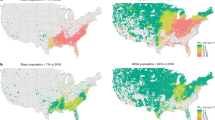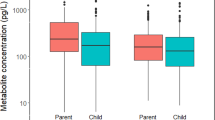Abstract
The National Human Exposure Assessment Survey (NHEXAS) provides a rich database of exposure and environmental measurements for persons living in EPA Region V (Great Lakes). Demographics (e.g., gender, minority status, age, income, and year home built) between U.S. Census data and the overall Region V sample were compared and showed good agreement. This representative sample was used to conduct an exploratory investigation of selected subpopulations that might exhibit higher exposures, on average, to volatile organic chemicals (VOCs) such as benzene, chloroform, etc.; inspirable particles; and metals (e.g., lead, arsenic, etc.) than the general population in Region V. Means and medians were the metrics of comparison. Personal air exposures for p-dichlorobenzene were significantly higher in adults (>21 years old) than in children (1–14 years old) (median: below detection limit vs. 0.87 μg/m3, p=0.0005), while a trend toward higher levels of arsenic exposure in children than adults was observed (median: 1.13 vs. 0.8 ng/m3, p=0.083). A trend towards higher personal air exposure to lead for minorities vs. nonminorities was evident (median: 26 vs. 12 ng/m3, p=0.066), but personal exposure to 1,1,1-trichloroethane tended to be higher in nonminorities (mean: 22 vs. 3.7 μg/m3, p=0.081). Dietary exposure to arsenic from solid foods was significantly higher in adults than children (mean: 21 vs. 7.1 μg/kg, p=0.0001; median: 10 vs. 5.6 μg/kg, p=<0.001), and for cadmium it was higher for nonminorities than minorities (median: 18 vs. 15 μg/kg, p=0.023). In contrast, the dietary intake for arsenic, which is based on body weight, was significantly higher in children than adults (mean: 1.72 vs 1.38 μg kg−1 day−1, p=<0.0001; median 1.02 vs. 0.83, p=<0.0001). Dietary exposure to chromium in beverages tended to be higher in minorities than nonminorities (median: 16 vs. 13 μg/kg, p=0.017). Lead levels in surface dust wipes tended to increase with the age of the home (mean: 128 μg/g in homes built since 1980 to 1075 μg/g in homes built before 1940; median: 93 to 236 μg/g, respectively). These findings were consistent with the observation that for persons living in older homes personal air exposures to lead are elevated compared to persons living in recently built homes (median: 12 ng/m3 in homes built since 1980, vs. 24 ng/m3 in homes built before 1940, p=0.043).
This is a preview of subscription content, access via your institution
Access options
Subscribe to this journal
Receive 6 print issues and online access
$259.00 per year
only $43.17 per issue
Buy this article
- Purchase on Springer Link
- Instant access to full article PDF
Prices may be subject to local taxes which are calculated during checkout
Similar content being viewed by others
Author information
Authors and Affiliations
Corresponding author
Rights and permissions
About this article
Cite this article
PELLIZZARI, E., PERRITT, R. & CLAYTON, C. National human exposure assessment survey (NHEXAS): exploratory survey of exposure among population subgroups in EPA Region V. J Expo Sci Environ Epidemiol 9, 49–55 (1999). https://doi.org/10.1038/sj.jea.7500025
Published:
Issue Date:
DOI: https://doi.org/10.1038/sj.jea.7500025
Keywords
This article is cited by
-
A review of different phytoremediation methods and critical factors for purification of common indoor air pollutants: an approach with sensitive analysis
Air Quality, Atmosphere & Health (2022)
-
Predictors of personal air concentrations of chloroform among US adults in NHANES 1999–2000
Journal of Exposure Science & Environmental Epidemiology (2009)
-
Enhanced Acquisition of Cocaine Self-Administration in Rats Developmentally Exposed to Lead
Neuropsychopharmacology (2005)
-
Personal, Indoor, and Outdoor VOC Exposures in a Probability Sample of Children
Journal of Exposure Science & Environmental Epidemiology (2004)
-
Ambient, indoor and personal exposure relationships of volatile organic compounds in Mexico City Metropolitan Area
Journal of Exposure Science & Environmental Epidemiology (2004)



